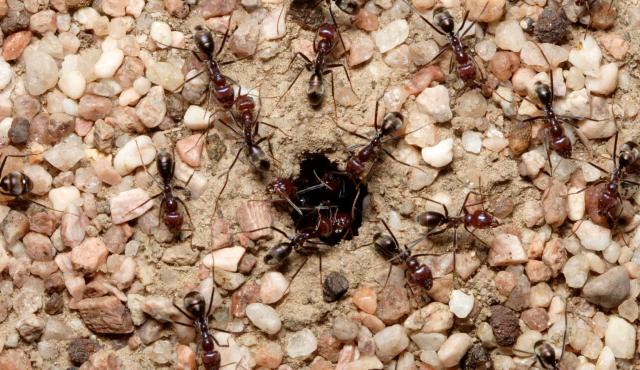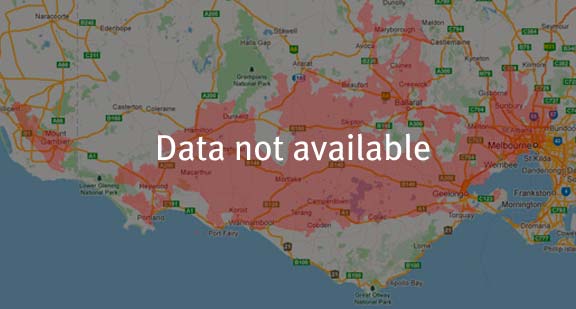A range of teacher professional learning programs will be developed to accompany the Biodiversity of the Western Volcanic Plains online outreach...

Meat Ant
Iridomyrmex purpureus
Forages during the day. Their nests are large mounds, cleared of vegetation and covered by small pebbles. The construction of their large nests help to aerate the soil. By collecting and removing dead material from the areas surrounding their nest, ants help to cycle organic material back into the ecosystem. The colony can contain tens of thousands of workers. There are different castes within the Meat Ant colony - the larger ones act as soldiers to defend the nest, and the smaller ones act as workers. Meat Ants are very aggressive and territorial and reduce the number of other ant species nesting and foraging in the area.
| Details | Description |
| Type | Invertebrate |
| Group | Insect - Ant |
| Identifying Characteristics | |
| Distinctive Markings | Purple body. Long legs and large head. |
| Diet | Omnivore. Eats nectar and other plant juices as well as juices from insects. Catches and eats animal prey. Food for echidnas. |
| Habitat | Lives in sandy or gravel soils in urban areas, forests, woodlands and heathlands. |
| Native Status | Native to Australia |
| Bites/Sting | Meat Ants can bite, but they do not have a sting. The worker ants secrete a defensive fluid from the end of their abdomen. |
| Taxonomy | |
| Phylum | Arthropoda |
| Class | Insecta |
| Order | Hymenoptera |
| Family | Formicidae |
| Genus | Iridomyrmex |
| Species | purpureus |

Distribution maps indicate current and historic locations where species have been sighted.
Source: Atlas of Living Australia
| Conservation Status | |
| DEPI Advisory List | Not listed |
| FFG Act | Not listed |
| EPBC Act | Not listed |
The conservation status of species is listed within Victoria and Australia.
The Department of Environment and Primary Industry (DEPI) Advisory List consists of non-statutory advisory lists of rare or threatened flora and fauna within Victoria.
The Flora and Fauna Guarantee Act 1988 (FFG Act) lists threatened species in Victoria. Under the Act, an Action Statement is produced for each listed species.
The Environment Protection and Biodiversity Conservation Act 1999 (EPBC Act) is the Australian Government’s key piece of environmental legislation, listing nationally threatened native species and ecological communities.



